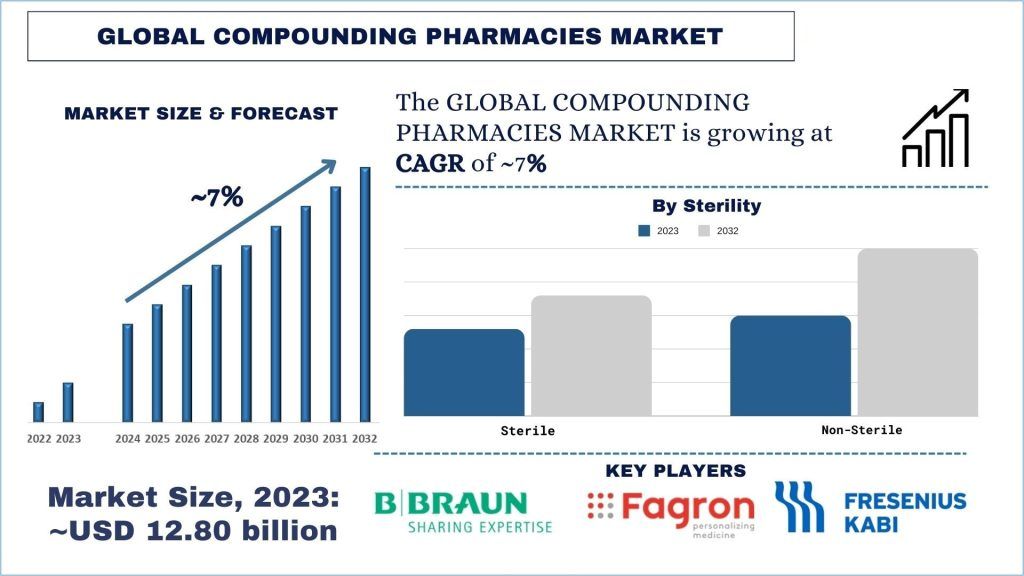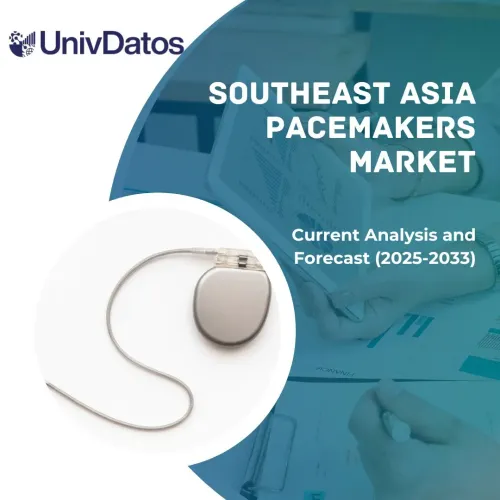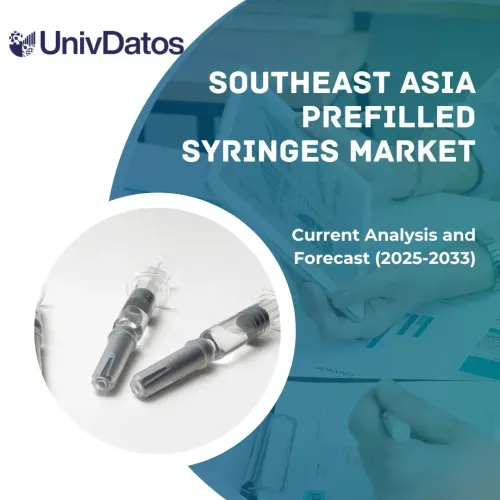- Home
- About Us
- Industry
- Services
- Reading
- Contact Us
Compounding Pharmacies Market: Current Analysis and Forecast (2024-2032)
Emphasis on Therapeutic Area (Hormone Replacement Therapy, Pain Management, Specialty Drugs, Dermatology, Nutritional Supplements, and Others); Route of Administration (Oral, Topical, and Others); Age (Pediatric, Adult, Geriatric, Veterinary); Compounding Type (Pharmaceutical Dosage Alteration (PDA), Pharmaceutical Ingredient Alteration (PIA), Currently Unavailable Pharmaceutical Manufacturing (CUPM), and Others); Sterility (Sterile, and Non-Sterile); and Region/Country
Compounding Pharmacies Market Size & Forecast
The Compounding Pharmacies Market was valued at approximately USD 12.80 billion and is expected to grow at a substantial CAGR of around 7% during the forecast period (2024-2032) owing to the increasing prevalence of chronic diseases like diabetes, cardiovascular diseases, and cancer.
Compounding Pharmacies Market Analysis
Compounding pharmacies are specialized pharmacies that prepare customized medications tailored to the specific needs of individual patients. These medications are often required when commercially available drugs are unsuitable due to allergies, sensitivities, or specific dosage requirements. Compounding pharmacies can create medications in various forms, such as capsules, creams, gels, liquids, or even lollipops, allowing for more personalized treatment options.
This market has expanded favorably to enable growth and penetration in the compounding pharmacies industry; increased regulatory oversight ensures the safety and efficacy of compounded medications and requires pharmacies to adhere to stringent standards, impacting operational costs and processes. In 2023, The committee provides advice on scientific, technical, and medical issues concerning drug compounding under sections 503A and 503B of the Federal Food, Drug, and Cosmetic Act and, as required, any other product for which the Food and Drug Administration has regulatory responsibility and make appropriate recommendations to the Commissioner of Food and Drugs.
Compounding Pharmacies Market Trends
This section discusses the key market trends influencing the various segments of the Compounding Pharmacies market as identified by our research experts.
Pain Management Compounding Pharmacies Transforming Industry.
Pain management is projected to dominate the global compounding pharmacies market in 2023. This is mainly because patients with chronic pain conditions often require customization dosages and specific formulations to manage their unique pain levels effectively. Moreover, due to the demand for allergen-free medications, patients with allergies to certain excipients or fillers in commercial medications can receive customized formulations that exclude these allergens. Furthermore, rising chronic pain conditions, such as arthritis, fibromyalgia, and neuropathic pain, require long-term management strategies. As per the National Institutes of Health (NIH) (.gov), 2023, new chronic pain cases were high, at 52.4 cases per 1,000 persons per year. This is compared to other common chronic conditions, such as diabetes (7.1 cases/1,000 per year), depression (15.9 cases/ 1,000 per year), and hypertension (45.3 cases/1,000 per year).
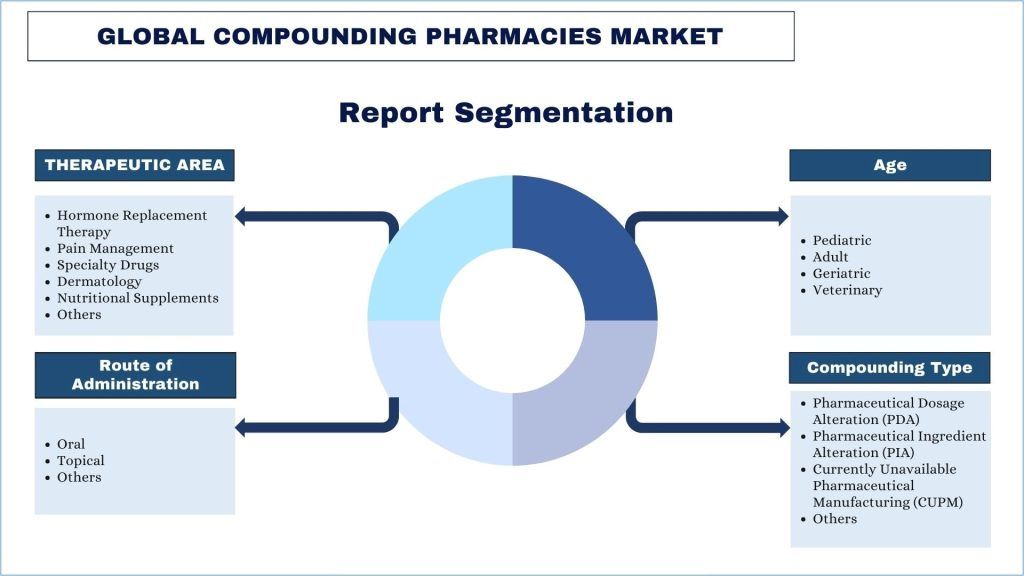
North America leads the market in 2023
North American regions are significant for the healthcare industry and dominate the market in 2023. It offers healthcare providers and patients access to customized medications that may not be available through commercially manufactured drugs. Additionally, regulatory frameworks such as the Drug Quality and Security Act (DQSA) ensure the safety, quality, and efficacy of compounded medications, further fueling the expansion of the compounding pharmacy sector in North America.
As per the FDA data, in 2023, The Drug Quality and Security Act (DQSA) was enacted by Congress on November 27, 2013. Title II of DQSA, the Drug Supply Chain Security Act (DSCSA), outlines steps to achieve interoperable, electronic tracing of products at the package level to identify and trace certain prescription drugs as they are distributed in the United States. This will enhance FDA’s ability to help protect consumers from exposure to drugs that may be counterfeit, stolen, contaminated, or otherwise harmful.
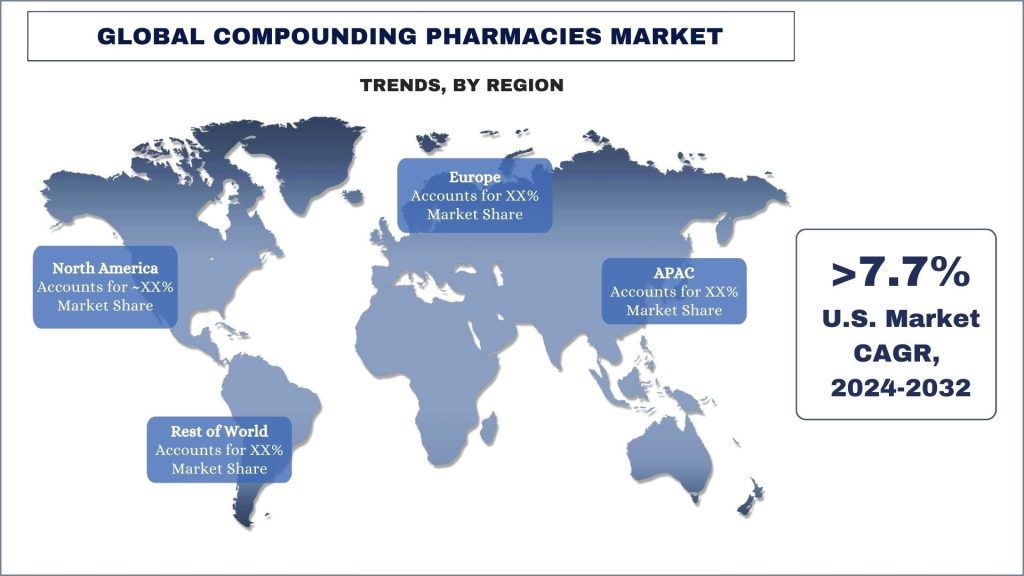
Compounding Pharmacies Industry Overview
The Compounding Pharmacies market is competitive, with several global and international market players. The key players are adopting different growth strategies to enhance their market presence, such as partnerships, agreements, collaborations, new product launches, geographical expansions, and mergers and acquisitions. Some of the major players operating in the market are B. Braun Medical Inc., Fagron, Fresenius Kabi AG, Clinigen Limited, PCCA, WEDGEWOOD PHARMACY, Walgreen Co., Albertsons Companies, Inc., Revelation, Pharma, RX3 Compounding Pharmacy.
Compounding Pharmacies Market News
- In March 2024, Braun announced a collaboration agreement with Orlando Health, a nationally recognized healthcare provider with award-winning hospitals, to jointly develop innovative solutions to increase patients’ and clinicians’ access to care.
- In March 2023, Fagron Academy launched a partnership with Gates Healthcare to expand support to compounding pharmacies
- In June 2021, Clinigen signed an agreement to divest its UK compounding business. This disposal further simplifies the Clinigen structure, which is now focused on its two core divisions: Services and Products. It removes complexities associated with the ongoing management of non-core sites and staff.
Compounding Pharmacies Market Report Coverage
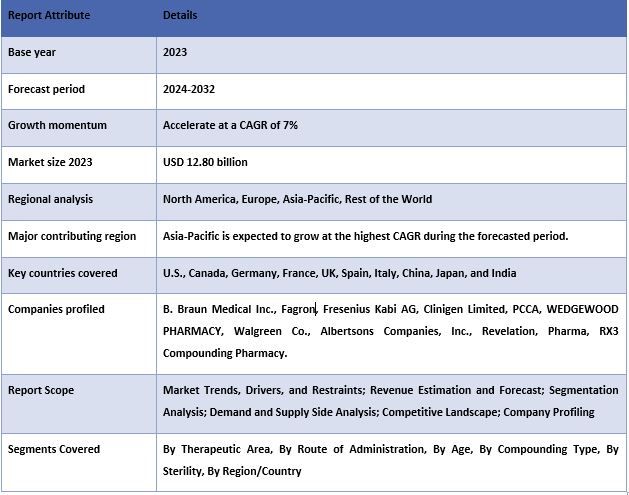
Reasons to buy this report:
- The study includes market sizing and forecasting analysis validated by authenticated key industry experts.
- The report presents a quick review of overall industry performance at one glance.
- The report covers an in-depth analysis of prominent industry peers with a primary focus on key business financials, product portfolios, expansion strategies, and recent developments.
- Detailed examination of drivers, restraints, key trends, and opportunities prevailing in the industry.
- The study comprehensively covers the market across different segments.
- Deep dive regional level analysis of the industry.
Customization Options:
The global compounding pharmacies market can further be customized per the requirement or any other market segment. Besides this, UMI understands that you may have your own business needs; hence, feel free to connect with us to get a report that completely suits your requirements.
Table of Content
Research Methodology for the Compounding Pharmacies Market Analysis (2022-2032)
Analyzing the historical market, estimating the current market, and forecasting the future market of the global Compounding Pharmacies market were the three major steps undertaken to create and analyze the adoption of Compounding Pharmacies in major regions globally. Exhaustive secondary research was conducted to collect the historical market numbers and estimate the current market size. Secondly, numerous findings and assumptions were taken into consideration to validate these insights. Moreover, exhaustive primary interviews were also conducted, with industry experts across the value chain of the global Compounding Pharmacies market. Post assumption and validation of market numbers through primary interviews, we employed a top-down/bottom-up approach to forecasting the complete market size. Thereafter, market breakdown and data triangulation methods were adopted to estimate and analyze the market size of segments and sub-segments of the industry. Detailed methodology is explained below:
Analysis of Historical Market Size
Step 1: In-Depth Study of Secondary Sources:
A detailed secondary study was conducted to obtain the historical market size of the Compounding Pharmacies market through company internal sources such as annual reports & financial statements, performance presentations, press releases, etc., and external sources including journals, news & articles, government publications, competitor publications, sector reports, third-party database, and other credible publications.
Step 2: Market Segmentation:
After obtaining the historical market size of the Compounding Pharmacies market, we conducted a detailed secondary analysis to gather historical market insights and share for different segments & sub-segments for major regions. Major segments are included in the report, such as therapeutic area, route of administration, age, compounding type, sterility, and regions. Further country-level analyses were conducted to evaluate the overall adoption of testing models in that region.
Step 3: Factor Analysis:
After acquiring the historical market size of different segments and sub-segments, we conducted a detailed factor analysis to estimate the current market size of the compounding pharmacies market. Further, we conducted factor analysis using dependent and independent variables such as therapeutic area, route of administration, age, compounding type, sterility, and regions of the compounding pharmacies market. A thorough analysis was conducted of demand and supply-side scenarios considering top partnerships, mergers and acquisitions, business expansion, and product launches in the Compounding Pharmacies market sector across the globe.
Current Market Size Estimate & Forecast
Current Market Sizing: Based on actionable insights from the above three steps, we arrived at the current market size, key players in the global compounding pharmacies market, and market shares of the segments. All the required percentage shares split, and market breakdowns were determined using the above-mentioned secondary approach and were verified through primary interviews.
Estimation & Forecasting: For market estimation and forecast, weights were assigned to different factors including drivers & trends, restraints, and opportunities available for the stakeholders. After analyzing these factors, relevant forecasting techniques i.e., the top-down/bottom-up approach were applied to arrive at the market forecast for 2030 for different segments and sub-segments across the major markets globally. The research methodology adopted to estimate the market size encompasses:
- The industry’s market size, in terms of revenue (USD) and the adoption rate of the Compounding Pharmacies market across the major markets domestically
- All percentage shares, splits, and breakdowns of market segments and sub-segments
- Key players in the global Compounding Pharmacies market in terms of products offered. Also, the growth strategies adopted by these players to compete in the fast-growing market
Market Size and Share Validation
Primary Research: In-depth interviews were conducted with the Key Opinion Leaders (KOLs) including Top Level Executives (CXO/VPs, Sales Head, Marketing Head, Operational Head, Regional Head, Country Head, etc.) across major regions. Primary research findings were then summarized, and statistical analysis was performed to prove the stated hypothesis. Inputs from primary research were consolidated with secondary findings, hence turning information into actionable insights.
Split of Primary Participants in Different Regions
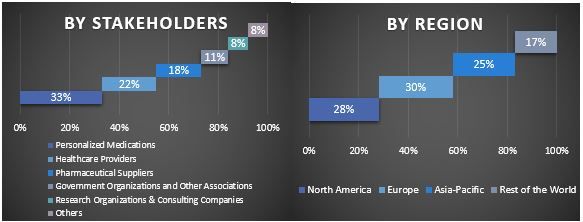
Market Engineering
The data triangulation technique was employed to complete the overall market estimation and to arrive at precise statistical numbers for each segment and sub-segment of the global compounding pharmacies market. Data was split into several segments and sub-segments after studying various parameters and trends in the therapeutic area, route of administration, age, compounding type, sterility, and regions of the global Compounding Pharmacies market.
The main objective of the Global Compounding Pharmacies Market Study
The current & future market trends of the global compounding pharmacies market were pinpointed in the study. Investors can gain strategic insights to base their discretion for investments on the qualitative and quantitative analysis performed in the study. Current and future market trends determined the overall attractiveness of the market at a regional level, providing a platform for the industrial participant to exploit the untapped market to benefit from a first-mover advantage. Other quantitative goals of the studies include:
- Analyze the current and forecast market size of the compounding pharmacies market in terms of value (USD). Also, analyze the current and forecast market size of different segments and sub-segments.
- Segments in the study include areas of the therapeutic area, route of administration, age, compounding type, sterility, and regions.
- Define and analyze the regulatory framework for the compounding pharmacies
- Analyze the value chain involved with the presence of various intermediaries, along with analyzing customer and competitor behaviors of the industry.
- Analyze the current and forecast market size of the compounding pharmacies market for the major region.
- Major countries of regions studied in the report include Asia Pacific, Europe, North America, and the Rest of the World
- Company profiles of the Compounding Pharmacies market and the growth strategies adopted by the market players to sustain in the fast-growing market.
- Deep dive regional level analysis of the industry
Related Reports
Customers who bought this item also bought

